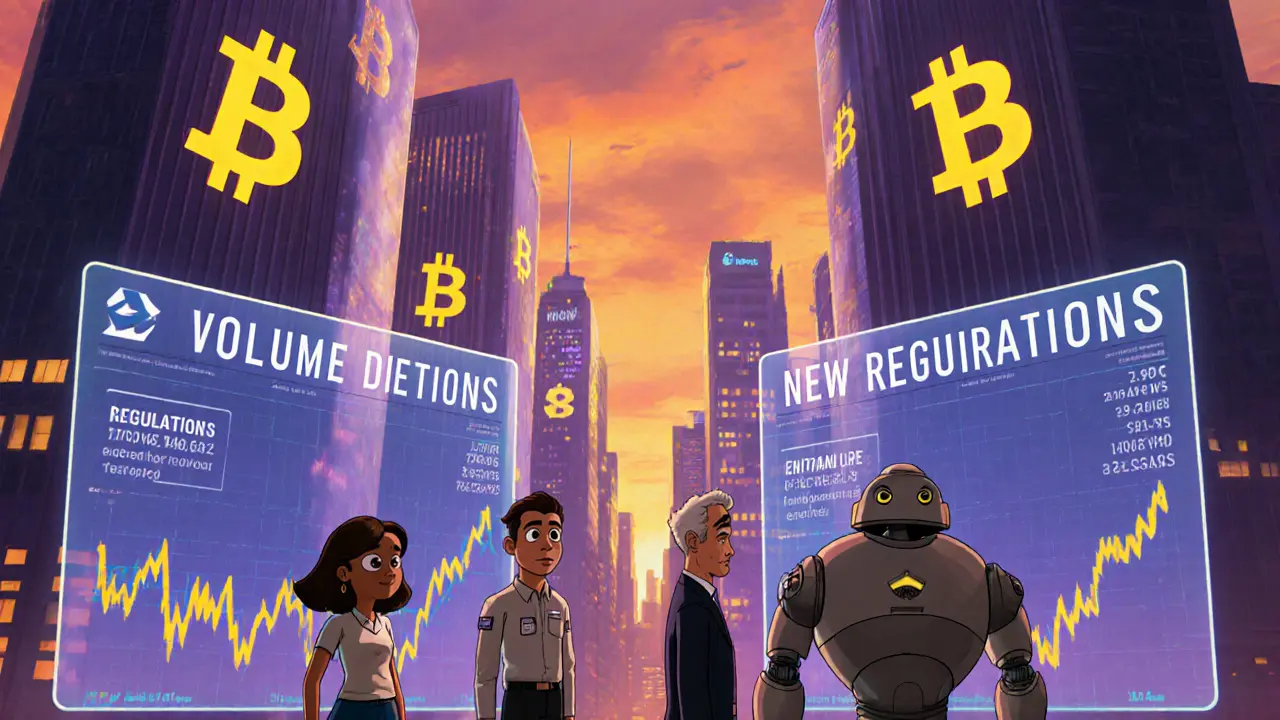Exchange Volume Contraction Explained
When dealing with exchange volume contraction, a sudden drop in the amount of crypto traded on a platform. Also known as trading volume decline, it often signals shifting market sentiment or technical bottlenecks. Understanding why this dip occurs helps you react faster and protect your positions.
At the heart of the issue is the crypto exchange, any online venue where users swap digital assets. When an exchange sees trading volume, the total value of assets bought and sold over a period shrink, it can’t ignore the ripple effects. Lower volume generally leads to tighter order books, which means price quotes can swing more wildly.
Why Volume Drops Matter
Think of volume as the lifeblood of an exchange. When that lifeblood thins, liquidity, the ease of converting one asset to another without big price moves dries up. A market with poor liquidity forces traders to accept larger spreads, raising the cost of each trade. This directly influences exchange fees, the charges users pay for execution and withdrawal because many platforms adjust fees to compensate for reduced activity.
One common trigger for exchange volume contraction is macro‑economic stress. When investors get nervous, they pull money out of risky assets, and the trading engines lose steam. Another driver is regulatory chatter – a hint of stricter rules can make users hesitant, causing a sudden dip in daily trades. Even technical hiccups, like network congestion on Bitcoin or Ethereum, can choke off transaction flow and shrink the reported volume.
From a trader’s perspective, these contractions create both risk and opportunity. Lower volume means fewer price points to act on, so you might see larger slippage if you place a big order. On the flip side, savvy users can spot undervalued assets that larger players ignore during a lull. The key is to watch the underlying metrics – order‑book depth, spread width, and fee adjustments – to gauge whether the contraction is temporary or part of a longer trend.
Another angle is the competition between centralized exchanges (CEXs) and decentralized exchanges (DEXs). When CEX volume contracts, some users migrate to DEXs looking for better rates or more anonymity. This shift can boost DEX liquidity, but it also fragments overall market depth. Keeping an eye on where the volume moves helps you decide which platform offers the best execution for the assets you trade.
Monitoring tools are essential. Most explorers now display real‑time volume charts, fee schedules, and liquidity snapshots. Pair these with on‑chain metrics like mempool pressure to get a full picture. If you notice a steady drop in the past 24‑48 hours while fees stay flat, it could hint at a coming fee hike. Conversely, a brief dip followed by a rebound often signals a short‑lived market shock rather than a structural issue.
In practice, adjust your strategy when you sense contraction. Use limit orders instead of market orders to control slippage, and consider scaling into positions to avoid moving the market. Diversify across a few exchanges to mitigate the impact of any single platform’s volume dip. And always keep an eye on upcoming regulatory announcements that could further squeeze activity.
Below you’ll find a curated list of articles that dive deeper into specific aspects of exchange volume contraction – from case studies of recent market slow‑downs to technical guides on measuring liquidity and managing fee exposure. These resources will give you actionable insights and help you stay ahead when trading volume starts to wobble.
Why Crypto Trading Volume Drops After New Regulations (2023-2025)
Explore why crypto trading volume fell after 2023-2025 regulatory changes, with data, case studies, and future outlook.
- 25
- Read More
